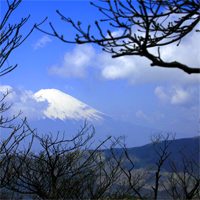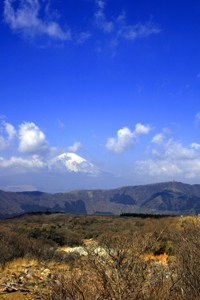





 The Hakone National park is only about an hour from Tokyo by train, on the old route from Tokyo to Kyoto. It is a popular resort town near Tokyo, and popular with Tokyo residents. It has many natural and also cultural attractions.
Hakone National Park is a possible day trip from Tokyo, but better still is to stay for at least two days because there is so much to do. There are hotsprings (like the Ten-zan Notemburo onsen), ferry rides, sulphur springs, and if weather permits, one of the nicest views on mount Fuji in Japan.
The Hakone National park is only about an hour from Tokyo by train, on the old route from Tokyo to Kyoto. It is a popular resort town near Tokyo, and popular with Tokyo residents. It has many natural and also cultural attractions.
Hakone National Park is a possible day trip from Tokyo, but better still is to stay for at least two days because there is so much to do. There are hotsprings (like the Ten-zan Notemburo onsen), ferry rides, sulphur springs, and if weather permits, one of the nicest views on mount Fuji in Japan.
From Tokyo we took the train from Shinjuku (Tokyo) to Odakyu (about half an hour by Shinkansen). From there we needed a train to Hakone-Yumoto, a small town known for its natural springs, and onsen. The Japan Rail Pass does not cover this area, and therefore we choose to buy a four-day public-transportation pass (at about 4200 yen).
We arrived late but we had reserved a guesthouse (minshuku) for the night. Since Hakone is close to Tokyo and rather popular with its residents, finding a place to sleep in Hakone can be rather difficult, especially in high season.


We had trouble finding the minshuku, and tried to find other places to sleep, but all hotels were booked (some high-end ryokan still had rooms but they were over 20,000 yen per night). It later turned out the website through which we found the minshuku used the Kanji script, while the minshuku used the Hiragana script, and just comparing the characters did not guide us to the minshuku. Moreover minshuku's are often normal houses, and therefore do not look like hotels, either. After about an hour we did find it, and to our suprise the minshuku had it's own small onsen, which we used to relax after our search.

The next morning we had a traditional Japanese breakfast. This is one of the great things about staying in a minshuku: you live a bit like the Japanese family that runs the minshuku.
After this we went into the direction of the lake, to Hakone-machi and Moto-Hakone. The Ashino lake may offer splendid views on mount Fuji, but unfortunately, it is often too cloudy, as it was when we were there. Therefore we went back to Hakone-Yumoto, where the train-station is located, in order to visit the sulfur vents on the hills of the Hakone National Park. From there we took a small train, that snaked through the mountainous landscape to bring us to Gora.


Around the train station in Gora, there are plenty of options to buy souvenirs, when waiting for the furnicular thatbrings you half-way to Owakudani. After the furnicular you take the cablecar and get a very nice view of the park, and on the sulfur springs. The sulfur springs are located at Owakudani. It is quite interesting to see the surfuric water spring from the mountains, and the white fumes continually rising from the rocks. People who are allergic to sulfur may not want to go here, are the air is full of it.

From up high here in the mountains we had again a chance to see Monut Fuji, and this time the weather was more forgiving, and we had about half an hour to enjoy Mount Fuji.
From Owakudani we took the bus to lake Ashino (Ashino-ko). There we took a boat, or a pirate ship (970 yen), that was clearly designed for tourists. Indeed, during summer it is apparently packed with tourists, but in spring it is relatively quiet.
Unfortunately, no Mount Fuji this time, but we did see Hakone shrine (Hakone-jinja), of which the torii is standing in the lake.
The train was waiting to bring us to Shimoda, and to the Izu Peninsula and Irozaki.

